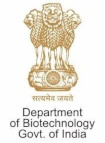CALVIN RODRIGUES
11th June 2015
Cardiovascular diseases are one of the leading causes of health concerns worldwide, and especially so in the Indian subcontinent. Among the major causes of primary cardiomyopathies are substitution mutations that occur in genes encoding sarcomeric proteins. Recent studies have shed light on understanding how mutations will affect generations irrespective of lifestyle choices and life span. However in the Indian context very little is known about this group of diseases that affect the composition of the heart muscles that may eventually lead to heart failure.
Primary cardiomyopathies are heart muscle disorders that affect 1 in 500 people in all ethnic groups. Almost 50% of cases are known to be inherited, however this fraction has been constantly increasing as more and more mutations are being discovered. The impaired blood ejection from the heart in cardiomyopathy patients is caused either due to thinning (dilated cardiomyopathy) or due to excessive thickening (hypertrophic cardiomyopathy) of the heart muscle. The symptoms observed in these patients range from sudden death at a young age, as seen in competitive athletes, to mild yet progressive cardiomyopathy, more prevalent in middle age that over the decades may lead to heart failure. Very little is known about the mechanisms underlying these cardiac conditions in humans.
Recent work published by scientists at the Institute for Stem Cell Biology and Regenerative Medicine (inStem) at Bangalore along with collaborators from the National Centre for Biological Sciences (NCBS), Cellular and Molecular Biology, Hyderabad (CCMB) and Stanford University among others have been able to suggest that a previously unappreciated diversity of molecular mechanisms may underlie cardiomyopathies. “Our goal is to understand fundamental disease mechanisms, so that we may identify small molecules that can be used to counteract the primary biochemical defect that causes these diseases” says principal investigator John Mercer.
The team of researchers at inStem including lead authors Tejas M. Gupte and Farah Haque worked on a group of mutant variants of the protein Tropomyosin 1, which is a critical player in muscle function. These mutations were known to be clinically associated with hereditary cardiomyopathies. A mutant discovered in the South Indian population, by the lab of Thangaraj Kurasamy at CCMB was also included in their analysis.
From earlier studies, it is now known that the dominant underlying mechanism associated with cardiomyopathies is an over or under responsiveness to calcium, a major player of muscle contraction. However the mechanisms by which this exaggerated or weakened response to calcium works is poorly understood. In an attempt to understand these mechanisms, the group used a range of biochemical assays on the mutants. These assays were used for the first time in an all-human reconstituted protein system. The mutants showed an interesting diversity in their responses to these assays and abnormal calcium sensitivity in these mutants could not be attributed to any single parameter. This heterogeneity highlights a need to sub-classify cardiomyopathies while devising approaches to treat them. “These differences highlight a need to further categorize cardiomyopathies while designing treatment methods”, said co-first author Farah Haque.
Insight gained from these studies enables the authors to reliably predict mutations that would replicate disease conditions. The group has successfully designed a novel mutant, that is hypersensitive and behaves like clinically discovered mutants.
An interesting practical application has also emerged from this entire study. The group used a fluorescence-based approach to measure calcium sensitivity, called ANS fluorescence different from the conventional “ATPase” assays. While the conventional assay is more sensitive and consistent it tends to be more cumbersome and resource draining set up. The fluorescence assay offers the possibility of high throughput and automated quick screening. “The fluorescence assay offers the possibility of large-scale, quick and automated screening of a large number of potentially useful drugs that alter calcium sensitivity”, said first author Tejas M. Gupte, who has since taken a postdoctoral fellowship at the University of Michigan in USA. Candidates emerging from these screens could then be tested more rigorously using other assays. This would be useful, for example, for screening large numbers of potentially useful drugs. This avenue is now being actively pursued by the group in their upcoming projects.
The paper can be accessed here: - The Journal of Biological Chemistry.
This work was supported by the Department of Biotechnology and philanthropic funding from the Wadhwani Foundation.










